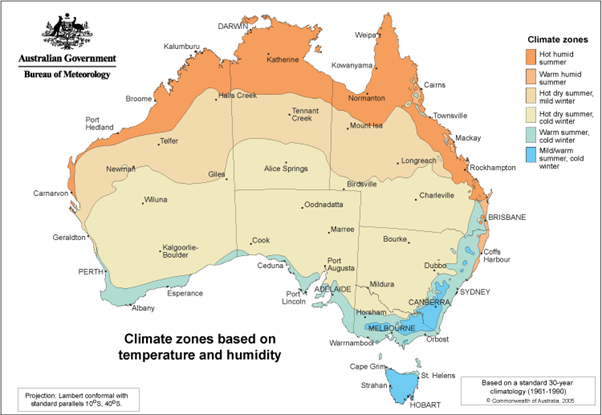Environmental factors that influence pavement design
In Australia, moisture and temperature have a significant effect on pavement performance.
Moisture changes usually result from one or more factors:
Changes in the height of the water table
Water seeping through the surface of the road pavement and the shoulders
Sudden and significant drop in the relative permeability of the layers in the pavement leading to the saturation of the materials in the space of the permeability reversal
Moisture being transferred due to moisture content or temperature differences within or beneath the pavement. This includes transfer due to the moisture content at construction being different to the equilibrium moisture content
Moisture being transferred due to osmotic pressure within the areas that contain root structures of large vegetation
Because pavement distress is significantly caused by water, surface and subsurface drainage needs to be in place. For example, consider the placement of geotexture as a separation layer above and below the drainage layer, or placing granular material in the subsurface drain to drain moisture.
Figure 1 Climate zones based on temperature and humidity in Australia.
Pavement temperature particularly affects the asphalt modules, and the fatigue characteristics of asphalt need to be examined in the asphalt design. Furthermore, the operating temperature of asphalt contributes to the potential of rutting when at high temperatures. The designer needs to select asphalt mix types suitable for the environment, and the asphalt mix design procedure should include rut-resistance. Wheel tracking can be used to evaluate the rut resistance of the asphalt, and this will aid in the selection and specification of asphalt mixes that are most suitable to the climate and design situation of the pavement.
Reference
Austroads’ 2017 Guide to Pavement Technology Part 2 Manual

